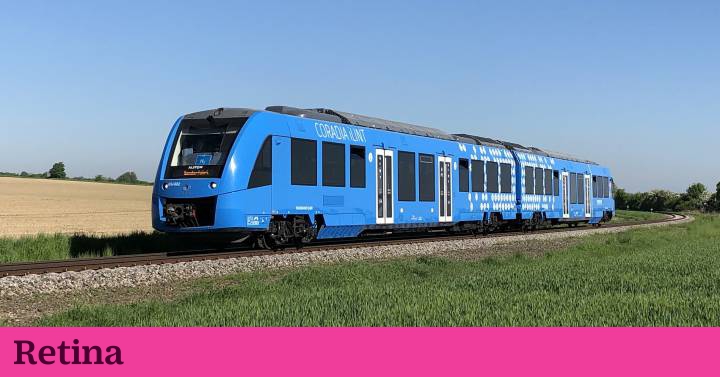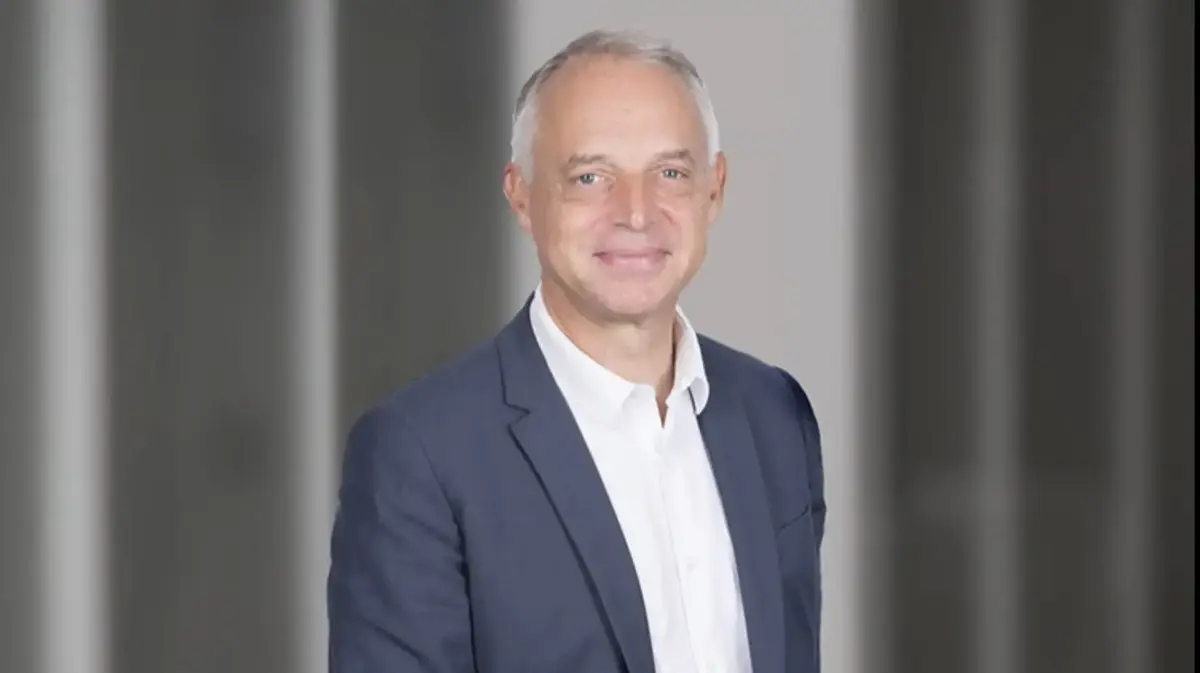FOLLOW
- Follow
Transport is one of the key sectors of polluting emissions, and the promoters of the Coradia iLint hydrogen trains (developed by the French manufacturer Alstom) assure that this type of fuel will be a green and efficient alternative. In Germany, the year and a half of testing two passenger convoys with a battery that transforms hydrogen and oxygen into electricity has just been completed. They have 1,000 kilometers of autonomy (the equivalent of a diesel of similar size) and reach 140 kilometers per hour.
The process to obtain this 'fuel' goes through a hydrolysis plant. There, hydrogen molecules are separated from oxygen molecules from electricity. "It is called green hydrogen, that is, it is extracted directly from these plants. If it were extracted from natural gas it would be called reformed hydrogen and it would not be such a clean process, ”explains Jaime Borrell, director of business development at Alstom Spain. Then the pressurized hydrogen enters the locomotive tanks through an intake and does the reverse operation of the hydrolysis plant to operate. "It mixes hydrogen particles with oxygen from the atmosphere," says Borrell.
The trains take about 10 minutes to recharge, and the battery where the mixture is produced lasts from 10 to 12 years. "It does not wear out like a battery from a camera or a mobile phone because we consume the hydrogen fuel itself and the battery is not damaged," adds Borrell. The project, which is being carried out in Lower Saxony (Germany) will culminate with the incorporation of 14 hydrogen-powered trains in 2022 that will replace the current diesel locomotives.
Electric trains, like hydrogen trains, generate a low carbon footprint, but need a large network of storage and cabling to function. The energy created in power plants must be sent to the train. It is transported through high-voltage cables to substations, that is, installations that lower the voltage of the energy and redistribute it to other sub-cables until reaching the catenary (the laying of cables located longitudinally on the track and supported by poles).
The pile where the mixture is produced lasts from 10 to 12 years
However, these trains are not substitutes for electric ones. They serve to replace those that run on diesel or coal (few of the latter remain, but are highly polluting). “To convert a conventional train to an electric one requires a high investment in infrastructure. Changes in the entire road, installation of catenaries and rolling stock, and the public administrations are not willing, therefore, to take the step, "says Eduard Álvarez, professor of Studies in Economics and Business at the Open University of Catalonia (UOC) . And for this reason, "these trains are a sustainable alternative when you do not want to transform the entire line," adds Álvarez.
The big difference with conventional railways is the hydrogen cell which, in addition to emitting only water vapor into the atmosphere, allows a change or innovation of the locomotive with very low replacement costs. “You buy another one with this system when the diesel or coal one breaks and that's it. The great advantage is that they could be installed on any road and there would only be a change in the propulsion system as long as the locomotive is Iberian or international gauge ”, adds Professor Álvarez.
Sustainable solutions are not only being sought in rail transport. In late May an electric plane took off that can carry up to nine passengers. The aircraft reaches a cruising speed of 183 kilometers per hour and can travel up to 160 kilometers. The Cessna 208B Gran Caravan took off on May 28, flew over Moses Lake (Washington, USA) for 30 minutes, and landed at Grant County Airport. The aircraft will begin commercial service in late 2021, according to the manufacturer.
Commercial electric flights
Tests. Testing with electric planes also takes steps forward. The Cessna 208B Gran Caravan took off on May 28, flew over Moses Lake (Washington, USA) for 30 minutes, and landed at Grant County Airport. The aircraft will begin commercial service in late 2021, according to the manufacturer.
Pioneers Before the Cessna, the first electric commercial flight was made on a Beaver DHC-2 floatplane in December 2019. It took off from the Fraser River (British Columbia, USA) and was in the air for 10 minutes. In June 2019, the company Ampaire managed to get its hybrid-powered light aircraft to fly in California.
Limitations. Aeronautical engineers agree that its use will always be limited to short and medium-range routes, since at the moment, it is impossible for a plane with hundreds of passengers to stay in the air with only electrical energy.









